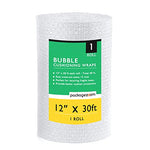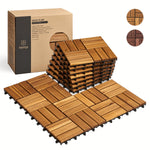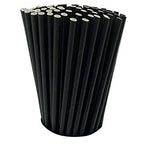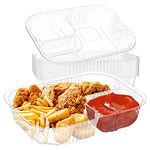You have no items in your shopping cart.
In today's world, where environmental consciousness is on the rise, finding sustainable solutions for waste management has become crucial. One such solution is the pallet compost bin, which offers an eco-friendly way to transform organic waste into nutrient-rich compost. In this article, we will delve into the concept of pallet compost bins, their benefits, and how to build and maintain one effectively.
What is a Pallet Compost Bin?
A pallet compost bin is a simple and cost-effective system that utilizes wooden pallets to create a contained space for composting organic materials. It consists of multiple pallets arranged in a rectangular shape, providing structure and airflow for the composting process. The pallets' open slats allow oxygen to reach the compost pile, promoting decomposition and preventing unpleasant odors.
Building Your Pallet Compost Bin
Materials Needed:
- Wooden pallets (at least four)
- Hammer or drill
- Nails or screws
- Wire mesh or chicken wire
- Staple gun or zip ties
Step-by-Step Guide:
-
Selecting the Right Location: Find a level spot in your garden or backyard that receives partial sunlight. Avoid placing the bin too close to structures or trees, as their roots may interfere with the composting process.
-
Preparing the Pallets: Start by dismantling one pallet to use as the back of your compost bin. Remove any nails or screws and place the pallet horizontally on the ground. This will serve as the bin's back panel.
-
Assembling the Bin: Stand two intact pallets upright to create the sides of the bin. Attach them to the back panel by nailing or screwing them together securely. Ensure the pallets are aligned properly to form a sturdy structure.
-
Creating the Front Panel: Take another pallet and secure it to the open side of the bin using nails or screws. This panel can be left removable or hinged to allow easy access to the compost pile.
-
Adding Wire Mesh: Line the inside of the bin with wire mesh or chicken wire to prevent compost from falling out through the slats. Secure the mesh using a staple gun or zip ties.
-
Optional Lid: If desired, you can create a lid for your pallet compost bin using a pallet or a piece of plywood. This will help retain heat and moisture within the bin.
Maintaining Your Pallet Compost Bin
To ensure effective composting and prevent unpleasant odors, it is essential to maintain your pallet compost bin properly. Here are some key tips for maintaining your bin:
-
Balancing the Compost: Aim for a balanced mix of green and brown materials in your compost pile. Green materials include kitchen scraps, grass clippings, and fresh plant waste, while brown materials consist of dry leaves, straw, and wood chips. The ideal ratio is roughly 3 parts brown to 1 part green.
-
Turning the Compost: Regularly turn the compost pile with a pitchfork or shovel to introduce oxygen and promote decomposition. This process helps accelerate the breakdown of materials and prevents the formation of anaerobic zones.
-
Moisture Management: Ensure that your compost pile remains consistently moist, similar to a damp sponge. If it becomes too dry, add water using a hose or watering can. Conversely, if it becomes too wet, mix in dry brown materials to improve aeration.
-
Avoiding Meat and Dairy Products: To prevent attracting pests and rodents, refrain from adding meat, dairy, or oily foods to your compost pile. These materials can also slow down the decomposition process and create unpleasant odors.
-
Patience and Time: Composting is a natural process that requires time and patience. Depending on the materials used and environmental conditions, it can take several months to a year for the compost to fully mature. Be consistent with your maintenance efforts, and you will eventually reap the rewards of nutrient-rich compost for your garden.
FAQs (Frequently Asked Questions)
1. Can I use treated pallets for my compost bin?
No, it is best to avoid using treated pallets for composting. Treated pallets may contain chemicals that can leach into the compost and potentially harm your plants. Opt for untreated pallets or consider using alternative materials like cedar or untreated lumber.
2. Can I compost weeds and diseased plants?
While composting weeds and diseased plants is possible, it requires proper management to prevent the spread of weed seeds or plant diseases. It is recommended to hot compost these materials at higher temperatures to ensure their destruction. Avoid using compost with weed seeds or diseased plants in areas where you don't want them to spread.
3. How often should I turn my compost pile?
Turning your compost pile once every 1-2 weeks is generally sufficient to maintain airflow and promote decomposition. However, if you notice the pile is too dry or not decomposing well, more frequent turning may be necessary. Adjust the frequency based on the progress and condition of your compost.
4. Can I add citrus peels and onions to my compost bin?
Yes, citrus peels and onions can be added to a compost bin. However, they should be added in moderation, as they can take longer to break down compared to other kitchen scraps. To speed up their decomposition, chop them into smaller pieces before adding them to the compost pile.
5. How do I know when my compost is ready to use?
When the compost has a dark, crumbly texture, and the original materials are no longer recognizable, it is a sign that your compost is ready to use. This process typically takes several months, depending on the conditions. You can also conduct a simple "germination test" by planting some seeds in a small amount of compost to observe how well they grow.
6. Can I use the compost immediately after harvesting?
While the compost is technically safe to use after it has fully decomposed, it is recommended to allow it to cure for a few weeks before applying it to your plants. Curing the compost helps stabilize its nutrient content and ensures optimal plant uptake.
Conclusion
Incorporating a pallet compost bin into your waste management routine can greatly contribute to a more sustainable and eco-friendly lifestyle. By recycling organic waste and transforming it into nutrient-rich compost, you not only reduce landfill waste but also enrich your garden with a natural fertilizer. Follow the steps outlined in this article to build your own pallet compost bin, and remember to maintain it properly for optimal composting results. Start composting today and take a small but significant step towards a greener future!








